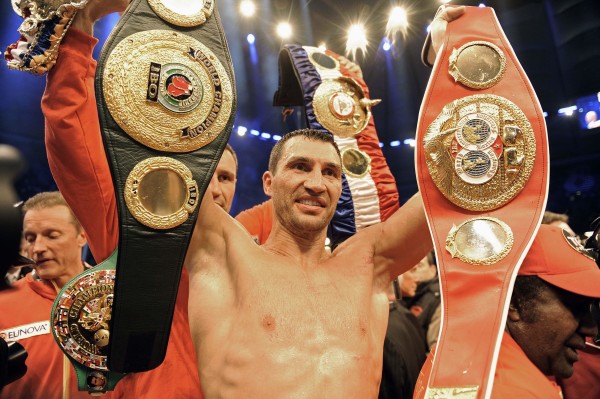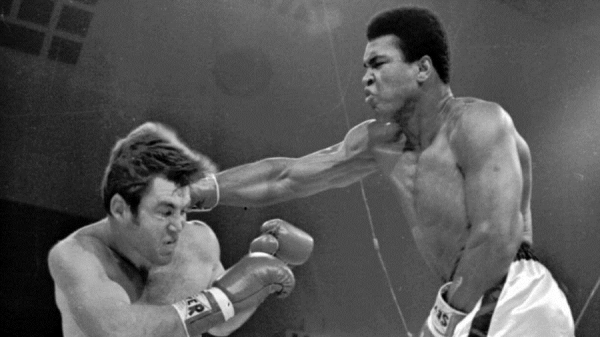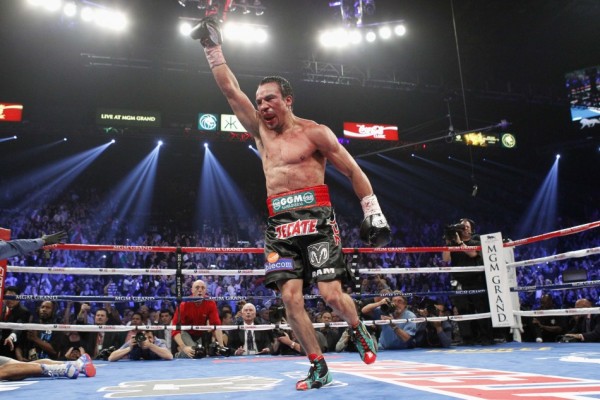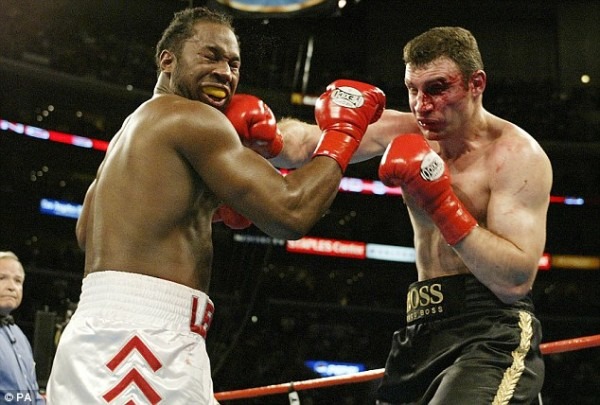All siblings fight. But not all fight in the squared circle. Last year on December 30 in the Land of the Rising Sun, a pair of brother tandems did.
On the night Naoya “Monster” Inoue knocked out long-time junior bantamweight champion Omar Andres Narvaez for his second world title in as many weight classes, their brothers also squared off.
Takuma Inoue, an amateur extraordinaire and just 19 years old, outboxed former flyweight title challenger Nestor Daniel Narvaez to an eight-round unanimous decision victory.
The Inoues are poised to continue finding success under their father and renowned trainer Shingo. Takuma is currently 4-0 and winning a belt would certainly make their father very proud. Sibling champions are special.
But they wouldn’t be the first. The Attell brothers (Monte and Abe) each won a world championship inside the first decade of the 20th century. Over 100 years later, the Klitschko’s took their turn concurrently reigning over the heavyweight division.
Boxing has a long history of great brothers—from trainer trios Roger, Floyd and Jeff Mayweather to trainer-fighter siblings Robert and Mikey Garcia.
But who were the best siblings in history? Let’s stick to purely fighter combinations and rank the very best to ever step inside the ring.
Honorable Mentions Part 1
15. The Fighting Sands
The pack of Sands brothers, Dave, Clem, Ritchie, George, Alfie and Russell, all fought professionally. Dave found the most acclaim, winning Australian titles at three different weight classes.
But together they combine for nearly 500 pro bouts—495 to be exact. It’s the most by a pair (or herd) of siblings in history.
14. George and Joe Chip
George Chip was a huge player in the middleweight ranks through the talent-rich mid-west of the early 20th century. He compiled a record of 79-66-17 (including newspaper decisions), knocking out the legendary Frank Klause twice and beating Hall of Famers Jack Dillon and the nonpareil Harry Greb.
Joe Chip was never the standout his brother was but that didn’t stop him from handing Greb the first knockout loss of his esteemed career.
13. Khaosai and Khaokor Galaxy
Most would rate the Galaxy brothers much higher, but their combined resumes don’t merit as much.
Khaosai Galaxy was as gigantic a super flyweight that anyone will ever see and he had a cracking punch to match. But his gaudy 47-1 record (including 41 knockouts) is hardly made up of anyone worth their weight in salt.
His twin brother, Khaokor Galaxy was actually the more technically-sound fighter. He is a two-time bantamweight weight world champion, beating the excellent Wilfredo Vazquez and Sung Kil Moon in 1988 and 1989, respectively.
Those are two wins his more popular brother can’t match.
12. Gaby and Orlando Canizales
Gaby Canizales, five years the eldest, was a perennial bantamweight contender during the 1980’s. Orlando Canizales came around in the 90’s and showcased a near flawless boxer-puncher style to hang on to the IBF 118-pound belt for six years.
11. Jerry, Mike and Bob Quarry
Jerry Quarry fought in a golden age of heavyweight talent. He shared the ring with names like Muhammad Ali, Floyd Patterson and Ken Norton–plus many, many more. He never did win a title himself, though.
His brother Mike Quarry didn’t either, losing by knockout to Bob Foster in 1972 in an unsuccessful bid for the WBC and WBA heavyweight belts.
Bobby Quarry, youngest of the three, fought too, accumulating a poor record of 9-12-2.
Honorable Mentions Part 2
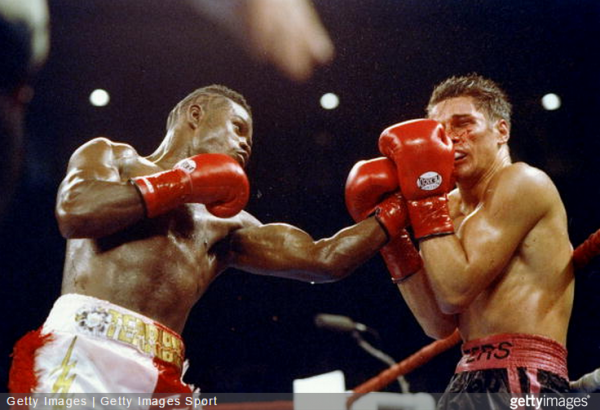
10. Donald, Bruce and Graylin Curry
Donald Curry was the youngest, but the most talented of the Curry brothers. He became the very best welterweight in the world when he beat Marlon Starling (for the second time) in 1984. “The Lone Star Cobra,” as he was called, eventually held the WBC, WBA and IBF 147-pound titles simultaneously.
Bruce Curry won the super lightweight version of the WBC belt. Some will tell you they were the first brothers to claim championships at the same time, but the aforementioned Attell brothers beat them to it by nearly 90 years.
Their brother Graylin Curry was the odd man out, walking away from the sport with just 13 wins to six losses.
9. Gene, Jay and Don Fullmer
Gene Fullmer was knocked out cleanly just once in his 64-fight career. Sugar Ray Robinson lit him up with a picture-perfect left hand in Round 5 of their middleweight title contest of 1957. Ray Robinson, was unable to beat Gene, a two-time champion, in their other three bouts.
The youngest brother, Don Fullmer, also partook in pugilistic affairs, proving himself a contender, sharing the ring with the likes of Emile Griffith and Dick Tiger.
Jay Fullmer, the middle child, also dabbled, retiring with a record of 54-20-5.
8. The Zivic Clan
Sons of Croatian refugees, the five Zivic brothers were bred for the fight game. Fritzie Zivic, the best of kin, is a Hall of Famer and former welterweight world champion, with a reputation for some of the roughest fighting the sport has ever seen.
Jack Zivic was a fine boxer himself, fighting in the 1920 Olympics and holds a win over Hall of Famer Lew Tendler in the paid ranks.
Eddie Zivic finished his career with a record below .500 but tangled with immortals like Tony Canzoneri and Henry Armstrong.
Pete Zivic was another 1920 Olympian and fought bantamweight legend Panama Al Brown.
Joe Zivic never did turn pro, but was a judge and referee.
7. Abe and Monte Attell
The two fought in an era in the early, early 20th century where championship claims were aplenty and proper record keeping was very scarce. Nonetheless, the Attell brothers fought for various championship bodies—Abe Attell at featherweight and Monte Attell at bantamweight.
Abe was the greater of the two sporting wins over the legendary George Dixon and murderous-punching Aurelio Herrera.
They rank this high for setting such a precedent so early.
6. Terry and Orlin Norris
Following Julian Jackson’s move up to middleweight, Terry Norris, who suffered a vicious Round 2 KO to Jackson in 1989, got his second crack at super welterweight supremacy when he took on John “The Beast” Mugabi.
The man they called “Terrible Terry” didn’t waste the opportunity, flattening Mugabi within one round. Under a year later he handed the legendary Sugar Ray Leonard a boxing lesson over a one-sided 12 rounds.
He made a total of 16 title defenses of his WBC and IBF 154-pound belts—beating other standouts Meldrick Taylor and Donald Curry.
Brother Orlin Norris also picked up a world title—defending his WBA cruiserweight strap four times—and later becoming a ranked heavyweight as well.
5. Vince and Joe Dundee
Both were Italian born with the surname Lazzara, changing their names upon their stateside arrival. Both could mix it up and awe their way to victory. Both laid multiple claims as the very best fighter in their division—Vince Dundee at middleweight, Joe Dundee at welterweight.
And both Dundee brothers are inexplicably absent from the International Boxing Hall of Fame.
Joe, the elder by four years, fought his way up the welterweight ranks throughout the 1920’s, fighting primarily out of the east coast. He drew with Hall of Famer Lew Tendler and beat standouts and ranked contenders Sailor Friedman (three times) and Willie Harmon before really sending waves through the division with a TKO victory over former champion and eventual giant-killing legend Mickey Walker in 1926.
After getting off the canvas to beat another notable fighter in Eddie “KO” Roberts (avenging a big upset loss two months prior), Joe earned himself a title shot against Pete Latzo.
At the end of 15 rounds in front of 30,000 fans at New York’s Polo Grounds, Joe was awarded a 15-round decision over Latzo for the world welterweight championship. He made one defense, but soon after dropped a points loss to the excellent Johnny Indrisano.
Joe’s reign, however, didn’t end there.
Indrisano would eventually suffer a broken jaw in defeat to Clyde Hull who Joe knocked out in early 1928 to reclaim his place atop the division.
It was three years later that Vince made his presence known in the middleweight division beating Hall of Famer Len Harvery twice in 1931.
Making his pro debut at 16, Vince didn’t grow into a full-fledge middleweight until about 1929. After beating Harvey, he amassed a record of 34-3-2 over his next 39 fights, highlighted by wins over standout Solly Krieger and Hall of Famer and two-weight world champion, the brutish Lou Brouillard for the 160-pound title.
The only men to defeat him over this stretch were another couple of Hall of Famers, Marcel Thil and rival Teddy Yarosz.
The record he retired with was an outstanding one: 122-21-14.
4. Michael and Leon Spinks
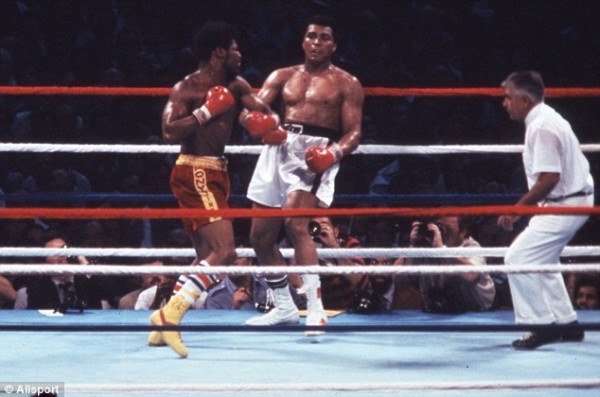
91 seconds.
It took Mike Tyson all but 91 seconds to not only tear down Michael Spinks for the heavyweight championship of the world but to also utterly tarnish his legacy.
He was really so much more than the quivering silhouette of a man served up to a young “Kid Dynamite” in 1988.
An Olympic gold medalist, Michael, sported a terrific mustache and a legendary right hand nicknamed the “Spinks Jinx.” But the herky-jerky stylist possessed a left just as demonic, stopping Murray Sutherland and Mustafa Wasajja with it in 1982, and nearly decapitating another murderous puncher Marvin Johnson with a left hook a year earlier.
The same year he lifted the WBA light heavyweight title from Eddie Mustafa Muhammad. And in 1983 he beat the legendary Dwight Muhammad Qawi for the right to call himself the bonafide best 175-pound fighter in the world.
He earned top billing at heavyweight, too, when he edged out Larry Holmes in ‘85 and ’86. The undefeated former light heavyweight Tyson tore down in less than a round should be remembered as one of the greatest fighters of all time.
His brother? Not so much.
Leon never lived up to the kind of expectations that come with beating a celebrity like Muhammad Ali in just your eighth pro fight. He dropped the return match to Ali later that year and fizzled out to no more than a journeyman and two more failed championship bids.
Nonetheless, Michael’s exploits carry the tandem this high.
3. Juan Manuel and Rafael Marquez
The Marquez family has a thing for quadrilogies.
The “Nacho” Beristain products are responsible for the two greatest four-fight series of the century—and maybe of all time.
Juan Manuel Marquez’s was the most significant, going an official 1-2-1 with icon Manny Pacquiao—the most recent of which was a KO victory for the Mexican in 2012.
Rafael Marquez’s didn’t obtain the mainstream success his brother’s did but it transcended the sport all the same in its violence.
A seven-time defending world bantamweight champion, Rafael jumped up to 122 pounds to take on fellow pound-for-pound claimant Israel Vazquez. The two embarked on a course of punch-drunk madness and laudable courage, fighting three times in the span of one calendar year. The Ring honored them with back-to-back Fight of the Year awards in 2007 and 2008.
Brother Juan Manuel was awarded the same thing in 2009 for his bloody melee with Juan Diaz.
Three years later, he outboxed Serhiy Fedchenko for the WBO super lightweight title, his fourth championship in as many weight classes.
2. Wladimir and Vitali Klitschko
Enter the brother kings of the heavyweight division.
Closer to seven feet than six and nearing 250 pounds, the Klitschko’s are two of the most successful champions in history.
Wladimir Klitschko (64-3), a sculpted giant—polished by the guru Emanuel Steward, implores a “jab-and-grab” style that can be as unbearable as it is unbeatable. But his 18-consecutive title defenses speak for themselves.
His older brother, Vitali Klitschko (45-2), now retired, is the gunslinger of the family. His TKO of Corrie Sanders in 2004 avenged his sibling’s unforeseen knockout loss the year before and stamped their surname on the division following Lennox Lewis’ retirement.
It’s been over a decade now and neither of them have lost. There are just five losses between their combined 114 fights. It’s that dominance that makes up for what their resumes lack.
Still, they’ve proven their worth against the best the division can offer—even if the talent doesn’t compare to the golden ages of yesteryear.
Vitali was well on his way to a decision win against another all-time great heavyweight in Lewis before being stopped on a cut in 2003. Lewis had been defeated before but never outboxed—not like that.
Alexander Povetkin was undefeated and undeniably the No. 2 heavyweight in the world following Vitali’s retirement but was no match for Wladimir’s ring generalship, succumbing to the first two knockdowns of his career in the second round—and three more through the remainder of the fight. The defending champion’s holding was at its worst, but his supremacy was never more apparent.
1. Mike and Tommy Gibbons
Mike Gibbons, dubbed the “St. Paul Phantom,” was hailed as the defensive maestro of his time. He stood an echelon above his younger brother of four years, Tommy Gibbons, in the eyes of the public when the two dazzled their way into boxing immortality during the 1920s.
But hindsight is a funny thing. In 2013, historian Matt McGrain of Boxing.com ranked the 100 greatest fighters in boxing history. Both brothers placed in the top 60. Mike took the No. 57 spot, Tommy, No. 36—despite neither ever winning a universally recognized world title.
Tommy, often noted for his failed title bid against the renowned Jack Dempsey in 1923 for the heavyweight championship, was no more a real heavyweight than his brother was a genuine middleweight.
Often flirting with the modern-day super welterweight limit (which wasn’t fully accepted until 1962), Mike beat Hall of Fame middleweights Leo Houck, Ted Kid Lewis, Jack Dillon, Jeff Smith and Mike O’Dowd.
He also tangled with the all-time great Harry Greb, beating him over six rounds in 1917 and dropping a decision to him in 1919 over 10.
Tommy fought Greb too, going 2-2 with the Pittsburgh Windmill over the course of a 13-year career that harbored an astounding record of 96-5-4.
Collecting scalps from standout middleweights Buck Crouse and George Chip, to light heavyweight and heavyweight Hall of Famers Battling Levinsky, Kid Norfolk, Billy Miske and Georges Carpentier, the younger Gibbons put together a resume feasibly better than his brother’s.
Alone, they were great. But together, they are the greatest siblings to ever grace the sport.
No championship belts be damned.
